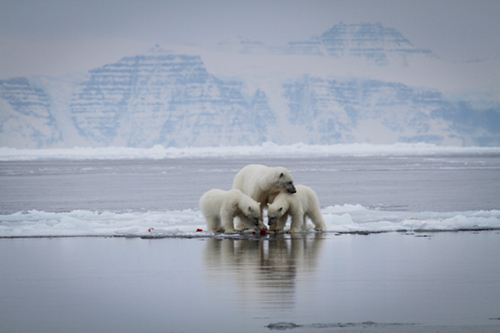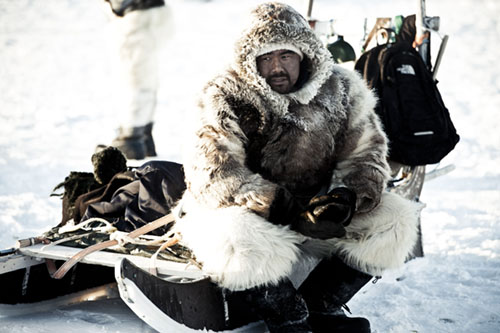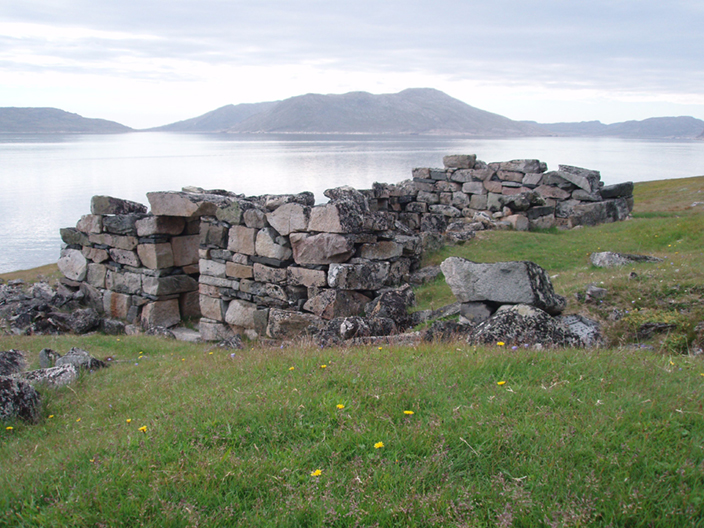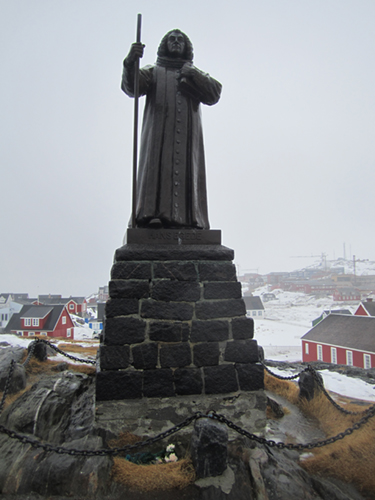Greenland and Denmark
This exhibit is no longer on display.
Exhibition Type
temporaryShare this Exhibition
Greenland and Denmark
(Exhibit on view Winter 2015 - Spring 2016)
Greenland, officially part of the Kingdom of Denmark, is the largest non-continental island in the world. It is located in the northern Atlantic between North America, Europe and Asia. It is believed that the island was named by the Viking Erik the Red, who wanted to give it an inviting name that would attract more settlers. Despite its formidable size of 835,000 sq. mi. (significantly larger than Alaska), Greenland has a population of just 56,000 people, ranking it as the least densely populated country in the world. Since 80% of the island is covered by ice, only the coasts are livable for humans.
Most of the population live in the southern part of Greenland, particularly the southwestern coast area, where the milder climate offers gentler conditions. Located in this area is Nuuk (or Godthåb in Danish), the capital and largest city of Greenland. The northeastern part of Greenland is almost completely uninhabited by humans and this area has been transformed into a 375,000 sq. mi. national park – the largest of its kind in the world.
The vast majority of Greenlanders are Inuits (a culturally distinct group of Eskimos), with a significant Danish minority. The official language is Greenlandic, but large parts of the population speak Danish and English as well.
The island – a former Danish colony – is today categorized as a “constituent country with some degree of autonomy and home rule,” but still tied to Denmark. The Danish Queen Margrethe II remains the Head of State of Greenland.
Settling in Greenland (2500 BC – 900 AD)
The first part of Greenland’s human history is one of migration and of different cultures coming and going. Evidence suggests that the first people to settle in Greenland were the Paleo-Eskimos who came from the northern part of North America. Arriving at around 2500 BC, they were later followed by several other waves of migrants.
Through the centuries all the cultures established by these people died out. Today, DNA-tests reveal that almost all Greenlanders descend from a later wave of Inuit migrants.
The Vikings visit (900 – 1500)
The Nordic connection to Greenland started in the Viking Age, when people from Scandinavia became aware of the existence of the Arctic island. Led by the legendary Viking, Erik the Red, a band of Norsemen explored and settled the southern part of Greenland in the late 10th century. It was from here that Erik the Red’s son, Leif Erikson, launched an expedition that brought him and his crew to North America; it is generally believed that they were the first Europeans to set foot on the continent.
Although initially attached to Norway, Greenland came under the influence of the Danish Crown when in 1380, Norway and Denmark fell under one rule. For reasons still debated today, the Norse settlements started to die out and by the year of 1500 they were completely gone.
Part of the Danish Kingdom (1700 – 1940)
The Danish claim to sovereignty over Greenland did not disappear with the Norsemen in the 15th century. Danish efforts to reestablish contact with the island intensified during the 1700s, when religious motivation played a significant role. Denmark’s control over Greenland tightened considerably and a process of colonization began. Many Danes moved to Greenland, and in 1775 the island was officially proclaimed a Danish colony. However, it was not until the 1930s that Denmark’s sovereignty over the island was recognized completely by international law.
In 1917, when Denmark sold the Danish West Indies (later renamed the Virgin Islands) to the United States, part of the deal was that the U.S. government would recognize full Danish authority over Greenland. Then, in 1931, Norway challenged Denmark’s claim to the island in the Permanent Court of International Justice, but the court ruled in Denmark’s favor.
Towards an independent nation (1940 – today)
When Denmark was occupied by Germany during the Second World War, the ties between Greenland and Denmark were temporarily cut, and the Arctic island ended up playing a much more independent role than initially anticipated. The United States quickly saw the strategic importance of the island as a stepping stone to get to Europe, and this importance did not diminish with the arrival of the Cold War. Even today, the United States has a military presence in Greenland.
The desire for independence that was forged during the World War was a lasting one, and in 1953 Greenland’s status as a colonial possession was forfeited and the island became a province of Denmark. Home rule was established in 1979, and even more autonomy and independence was achieved in a referendum in 2009. Whether Greenland eventually becomes a completely independent nation remains to be seen. However, the fairly significant amount of autonomy achieved by the Greenlanders in the last few decades has made independence a political possibility.




